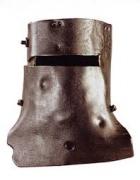Years ago, Benjamin Graham made a case for investing in stocks that trade below net current asset value. According to Graham, assuming that a company has a reasonable earnings track record and future prospects, paying no more than two-thirds of net current asset value per share ought to be a good deal for the investor. In the past, Warren Buffett and Joel Greenblatt have used this investment strategy or variants thereof.
How does one calculate net current asset value? One subtracts from current assets a company's total liabilities. Such a calculation likely is very conservative, as it assigns no value to a company's non-current assets such as property, plant and equipment.
A criticism of this strategy is that such opportunities are few and far between. They may have been commonplace many decades ago but one may see them only in the depths of a nasty bear market. If one appears under normal market conditions, then the company more often than not suffers from deep fundamental problems that make an investment too risky.
If one looks overseas, however, one can find quite a few stocks trading at substantial discounts to net current asset value. Companies with real businesses and profitable track records.
Consider Nippon Antenna Co., Ltd (OTC:NPNZF). Founded in 1953, it makes a range of products used in broadcasting and in reception, such as cable television equipment, satellite receivers, television signal receivers, antennae, marine antennae, portable phones, etc.
The company's businesses perform reasonably well. The company has produced a recurring profit in each of the past five years. Over the same period, cash flow from operations average 789 million Yen. Capital spending has averaged 557 million Yen, leaving free cash flow of 232 million Yen.
The balance sheet appears very strong. Here are the highlights in millions of Yen as of June 30, 2016:
(1) Current Assets = 19,323
(2) Non Current Assets = 5,455
(3) Total Assets = 24,778 [ = (1) + (2) ]
(4) Total Liabilities = 3,945
(5) Net Current Asset Value = 15,387 [ = (1) - (4) ]
The company has 14.3 million shares outstanding. Thus net current asset value per share is 1,075 Yen. The stock trades at just 543 Yen on November 1st, 2016. That's a 50% discount to net current asset value.
What are the catalysts to make the stock move higher? Nothing dramatic appears in the cards. However, the company has…





